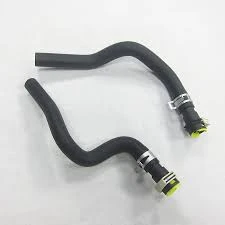replacing front main seal
Replacing the Front Main Seal A Comprehensive Guide
The front main seal is a crucial component in a vehicle's engine, located where the crankshaft exits the engine block. Its primary function is to prevent oil leaks and keep contaminants out of the engine. Over time, this seal can wear out or become damaged, leading to oil leaks that can cause significant engine problems if left unresolved. Replacing the front main seal is an essential maintenance task for any vehicle owner, especially if they notice oil spots on their driveway or a drop in engine oil levels.
Symptoms of a Failing Front Main Seal
Before diving into the replacement process, it's essential to recognize the signs of a failing front main seal. Common symptoms include oil leaks appearing at the front of the engine, a noticeable drop in oil levels, or a burning oil smell due to oil contacting hot engine components. If you notice any of these symptoms, it's crucial to act swiftly to prevent more extensive damage to the engine.
Tools and Materials Needed
Replacing the front main seal requires specific tools and materials. You'll need a socket set, wrenches, a torque wrench, a seal puller, a rubber mallet, and the replacement seal itself. Additionally, having engine oil and a clean rag on hand can help during the installation process.
The Replacement Process
1. Prepare the Vehicle Begin by parking the vehicle on a flat surface and engaging the parking brake. For safety, disconnect the negative terminal of the battery.
replacing front main seal

2. Access the Crankshaft Pulley Depending on the specific vehicle model, you may need to remove belts, the crankshaft pulley, and possibly the timing belt or chain to access the front main seal.
3. Remove the Old Seal Using a seal puller, carefully extract the old front main seal. Be cautious not to damage the housing area, as this could lead to further issues with the new seal's fit.
4. Clean the Area After removing the old seal, clean the housing area thoroughly to ensure no debris or old sealant remains. This will provide a clean surface for the new seal.
5. Install the New Seal Before installation, apply a thin layer of engine oil to the new seal's lip. This lubrication helps the seal seat properly and prevents damage during installation. Carefully place the new seal into the housing, using a rubber mallet to tap it gently until it is flush with the surface.
6. Reassemble the Components Once the new seal is in place, reassemble all previously removed components, including the crankshaft pulley and associated belts. Ensure everything is torqued to the manufacturer's specifications.
7. Check for Leaks After reassembly, reconnect the battery and start the engine. Allow it to reach operating temperature and check for any signs of leaks around the newly installed front main seal.
Conclusion
Replacing the front main seal is a manageable task for those with a basic understanding of automotive repair. However, if you're unsure or uncomfortable with the process, it’s always advisable to consult a professional mechanic. Regular maintenance and prompt attention to oil leaks can significantly extend the life of your engine and keep your vehicle running smoothly.
-
Understanding Automotive Oil Seals: Essential Components for Engine and Shaft Protection
News Jul.30,2025
-
The Importance of Heavy Duty Seals in Industrial and Residential Applications
News Jul.30,2025
-
Exploring Industrial Oil Seals: From Felt Oil Seals to TTO and CFW Solutions
News Jul.30,2025
-
Essential Guide to Oil Seals: From Radial to Metal-Cased Seals for Industrial Reliability
News Jul.30,2025
-
Choosing the Right Oil Seals and Gaskets for Industrial and Automotive Applications
News Jul.30,2025
-
Cassette Seals: Durable Sealing Solutions for Harsh Environments
News Jul.30,2025
-
Understanding the Front Main Engine Seal: Purpose, Maintenance, and Installation
News Jul.29,2025
Products categories















